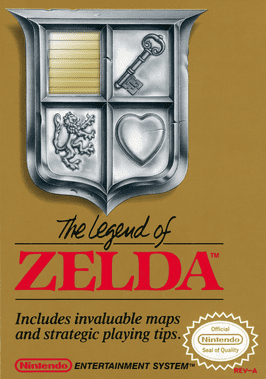I recently got a nifty handheld retro gaming device, and after revisiting some games that I loved as a kid, I decided to try my hand at this classic that came out when I was still in diapers. And my goodness, it was brutally hard. But, channeling my inner ’80s kid, I stuck with it long enough to figure out how to defeat various enemies, and which ones were better to avoid. I saved my rupees, purchased new equipment, and managed to make my way through a few dungeons, defeating the bosses to collect a few pieces of the tri-force. I’m not ashamed to admit I relied heavily on the emulator’s quick-save feature.
Then I got stuck. With no map of the over-world, I had a tough time remembering which dungeons I had explored already, and how everything fit together. And what about the rest of the dungeons? I had traveled all over Hyrule, and even managed to find a few secrets, but I would never be able to collect the rest of the pieces of the tri-force if I couldn’t even find the entrances to the remaining dungeons.
Finally, frustrated, I searched for a guide to the game, and after taking a few minutes to orient myself I felt good about that decision. The dungeon entrances were hidden. You had to push a statue out of the way, or burn a bush, or play your recorder in a specific location. Inside the dungeons, if you knew where to look, you could get special items that would make your life much, much easier. With the help of the guide (and quick-save!), I worked my way through each dungeon and finally defeated Ganon.
Despite relying on a couple big assists to beat the game, I still feel a sense of accomplishment. This game was big and complex, and I don’t think many of the people who beat it back in the day managed to do so without help. First of all, the original NES game came with a fold-out map of the over-world, which would have been incredibly helpful. But they probably also shared knowledge among parents, siblings, and friends, who were all trying to understand how to progress. After all, it’s dangerous to go alone — especially when you’re trying to figure out which bush to burn while baddies are chucking spears at you.
I’ve heard some people complain that Breath of the Wild and Tears of the Kingdom don’t feel like “real” Zelda games to them, but, having played those ones through first, I am impressed with how closely they follow the fantasy action-adventure formula popularized by this original game nearly forty years earlier. You start, underpowered, in a huge world full of danger. You explore, gain new skills, and discover secrets. You fight and solve your way through dungeons, defeat mini-bosses, and earn important upgrades before taking on Ganon. Despite the obvious graphical differences, the sense of mystery and adventure present from the title screen of the 1986 game is preserved through the most recent iterations.
Right now I’m planning on continuing to play through the whole Zelda series, having somehow missed it entirely growing up. I won’t lie, it’s tempting to wish for these early games to be a bit easier, to follow gaming conventions that weren’t developed until years later — but instead I’ll try to appreciate them for what they are, be humbled by the difficult moments, and reach for a guide when necessary.
